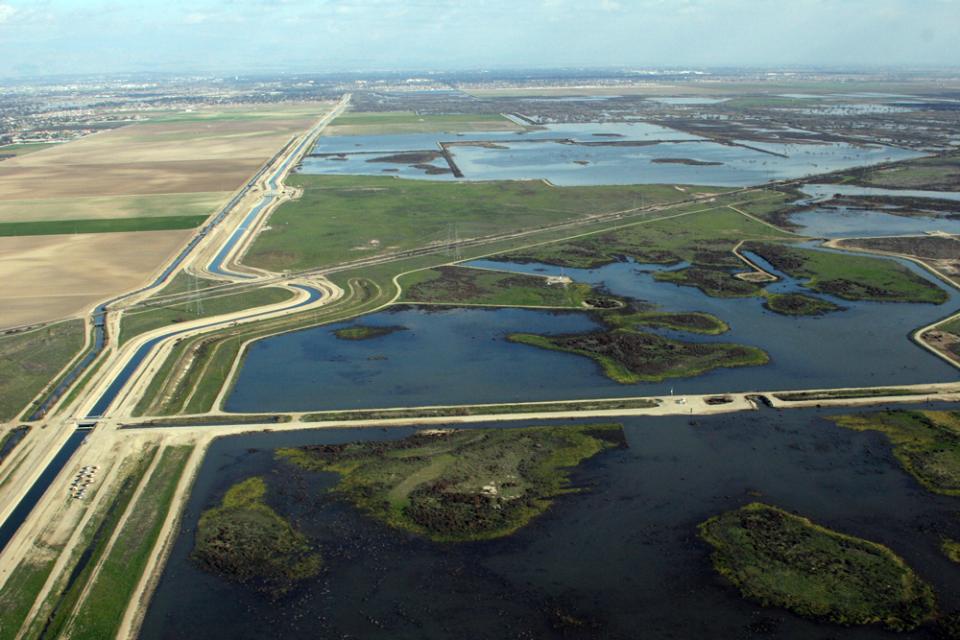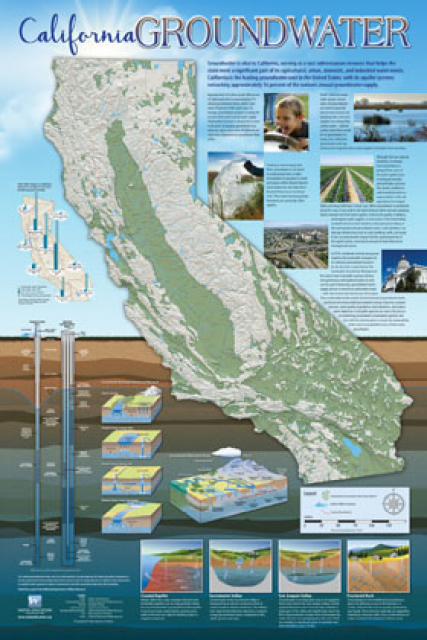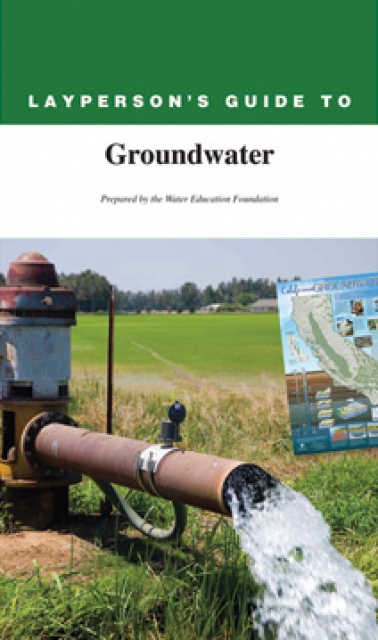Groundwater Replenishment
 Groundwater replenishment happens
through direct recharge and in-lieu recharge. Water used for
direct recharge most often comes from flood flows, water
conservation, recycled water, desalination and water
transfers.
Groundwater replenishment happens
through direct recharge and in-lieu recharge. Water used for
direct recharge most often comes from flood flows, water
conservation, recycled water, desalination and water
transfers.
During the hydrologic cycle, replenishment occurs naturally when rain, stormwater and the flow from rivers, streams and creeks seeps into an aquifer. Water also gets into the ground as farmers irrigate fields and orchards. Replenishment within the context of groundwater management is accomplished through recharge at rate that exceeds natural conditions, maintaining or improving groundwater elevation levels. Two recharge methods are used: direct spreading and aquifer injection.
Managed aquifer recharge is the intentional recharge of water to suitable aquifers for subsequent recovery or to achieve environmental benefits. Managed aquifer recharge occurs through injection wells or the use of ponds and infiltration basins. Sources of managed aquifer recharge include flood water and treated wastewater. Natural treatment processes in the aquifer can improve the quality of the water, though some pre-treatment of the source water may be required to make sure that the quality of the receiving groundwater is maintained or improved.
There is also in-lieu recharge in which an alternative source is provided to users who normally would use groundwater, thereby leaving groundwater in place for later use and increasing the potential to improve groundwater levels. Institutional and regulatory issues, access to surface water, water quality, conveyance system operations and capacity, financial feasibility and environmental sustainability are barriers to expanded recharge activities.










